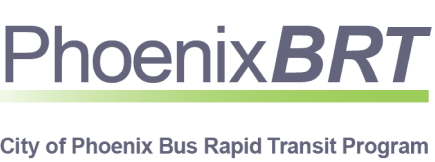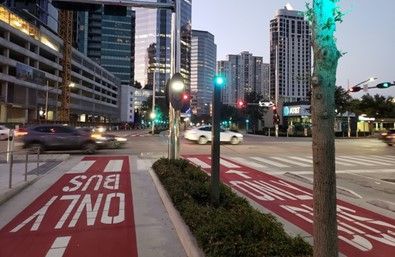Priority Traffic Signals for BRT Means Reliability and Faster Travel Times
Get to know your new BRT system – Transit Signal Priority: The new Phoenix BRT service will soon join the Valley’s many transportation options. This is one of a series of blog posts that explore common elements of BRT systems.

Phoenix BRT Program Team
BRT service can sometimes have an advantage over other vehicles along a route, namely, priority at the traffic signals, which improves system reliability and reduces travel times.
Thanks to modern technology, traffic signals along BRT routes “sense” a bus approaching an intersection and those signals will assign priority to BRT service over other mixed traffic.
The Institute for Transportation and Development Planning describes how it works: If a signal detects the BRT bus approaching an intersection while the signal is green, then it will extend the green light. If the bus is detected during a red or yellow phase, the signal will cycle to green more quickly.
The city of Houston, Texas, has operated the METRORapid Silver Line service since 2020 and due to its success, is now in the process of designing a second 25-mile line to supplement and expand existing service. The Silver Line includes transit signal priority along their routes, which they call transit-friendly traffic signals.

Transit signal priority can be found along the MetroRapid Silver Line Route.
Source: Metro Houston
In addition to staying on schedule, signal prioritization cuts down on travel times. In San Antonio, Texas, where VIA Metropolitan Transit has operated the VIA Primo BRT service since 2012, U.S. Department of Transportation researchers found that traffic signal prioritization improved the BRT system’s reliability and reduced travel times by 20 percent.
Although we are in the early corridor planning stages, if implemented, priority signalization for the Phoenix BRT service may offer riders reliability and shorter travel times.

